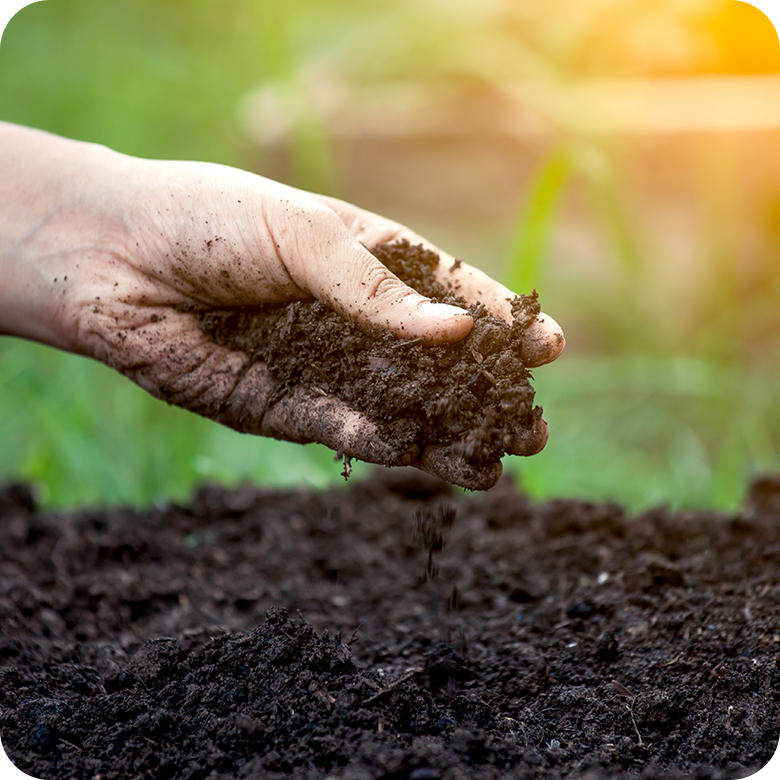Introduction To Soil
Preparation In Agriculture
The soil is the foundation of Agriculture, but not every soil type is suitable for every crop. Hence it necessitates the preparation of the land before and after the cultivation in order to produce a huge yield.
Soil preparation is the first action before farming a crop. Turning, rotating, and loosening the soil is one of the most important tasks in Agriculture. These tasks remove all unwanted plants and allow the roots to penetrate and breathe easily deep into the soil.
When properly prepared, soil can be improved every year and will continue to grow plants forever. The preparation of soil includes using equipment such as a plough, cultivator, etc. Shakti Agro Technology is the manufacturer and supplier of world-class agriculture equipment that will not only help you ease your work but will also help in saving time and resources.

Benefits Of Soil Preparation
Improve the porosity
Allows roots to penetrate the soil
Allows the roots to breathe easily
More water and nutrients into the root area
Construct oxygen to the roots
Makes the top soil nutrient rich
Causes easy decomposition by microbes and earthworms
Reduce runoff compared to crusty soil
Types of Soil
Soil formation is the result of chemical, physical and biological processes of different environmental conditions. Being a combination of biotic and abiotic components, soil contains microorganisms, worms, many nutrients, and elements like water and air which altogether makes the soil fertile and a source of nutrients.
The soil is mainly composed of three types:
In agriculture, hard soil is a dense layer of soil, found below the uppermost topsoil layer. Formed by the deposition of cemented soil particles, hard soil is largely impervious to water.
Cemented together by silica, iron oxide, calcium carbonate, or organic matter, the hard, dense, and compacted texture of soil makes it tough for plants to survive.
Hard soil prevents water from penetrating; hence, whenever the water comes in contact, it will slide off. The tender roots make it harder for organisms to survive; hence, even after the plant grows in hard soil, it lacks the nutrients required to sustain healthy crop growth.
Digging a hole in hard soil is far more difficult than soft or loose soil. Thus, plough is considered one of the top farming equipment for ploughing hard soils.
Ploughing improves air circulation in the soil and helps the roots to enter deeper into the soil and breathe easily. It also improves the soil’s water-absorbing ability and makes it nutrition-rich soil for healthy crops.
Shakti Agro Technology designs a wide range of plough models to break up the hard layers. Below are the various models of plough used for breaking soil and deep ploughing with minimum disturbance to the top layers.
Soft soil is the soil formed by the decay of organic matter and mineral particles that are easily compressible. This soil is susceptible to excessive penetration and can be easily squeezed into the fist.
Due to its density or composition, soft soil can very well absorb water and store moisture in it. This helps the soil particles to add humus and nutrients into the soil for better crop yields.
The soil strengthens the crops and provides better air ventilation to reach the roots of the plant which allows them to penetrate deeper into the soil and hold the plant firmly.
Digging a hole in hard soil is far more difficult than soft or loose soil. Thus, plough is considered one of the top farming equipment for ploughing hard soils.
Loose soil has soil particles that are loosely packed and have large void space in between, hence having a high void ratio and permeability.
Soft soil already has a natural loose soil structure for better farming, however, it is important to prepare the soil for the further farming process.
Ploughing not only helps loosen the soil but also prepares the soil for high productivity. By mixing and turning the soil, ploughing brings fresh nutrients to the surface while burying weeds and crop remains to decay.
At Shakti Agro Technology, we provide an efficient range of agricultural equipment that help ploughing soft soil. Below are the various models of plough used for smoothing and leveling soil for transplanting the seedlings.
Medium soil is soil that has a loamy texture formed with equal contributions of sand, silt, and clay. Medium texture soil is often considered one of the best soil types for agricultural activities as it is highly productive for crops and can be easily cultivated by farmers.
Medium soil is an ideal soil for crops having long and deep roots. The productive allows sufficient water infiltration without excessive drainage and has a good water holding capacity and nutrient retention.
The total pore space in the medium-textured soil is about 50% of the soil volume. During ploughing, an adequate amount of the air gets into the pores of the loosened soil helping roots use that air to breathe easily.
To improve the soil condition, ploughing is necessary. As farmers plough the field, it turns the soil and adds the organic matter back into the soil to increase soil fertility.
Shakti Agro Technology is a leading manufacturer and supplier of world-class farming equipment that help in soil preparation. Below we have listed the top plough model used in a medium soil type that provides sufficient crop yield and economic benefit.
Plough
Plough is made of either iron or wood and consists of three essential parts plough share, shaft, and beam. It is robust and sturdy and can be easily operated and attached to a tractor.
Rotavator
Rotavator is tractor-driven equipment used for secondary tillage. The equipment uses a series of blades that rotates and ploughs the land. It is a cost-effective tool for replacing various types of agricultural tools such as cultivators, disc harrows, and levelers.
Hoe
Hoe is the most commonly used tool for loosening during soil preparation. It is made of iron or wood and operated by a tractor.
Cultivator
The cultivator is one of the most important tools of soil preparation that can be used manually or driven by tractors. Though tractor-driven cultivators are found to be more efficient as it is fast and saves time and human labor.
Leveler
As the name suggests, a leveler is used for leveling the soil. The leveler is made of wooden or iron and can be used manually as well as with a tractor for breaking big pieces of soil and leveling the field.
Soil Preparation Steps
1Ploughing
Ploughing, also known as tilling, is the first step of soil preparation that includes loosening and digging of soil. The turned and loose soil improves the soil aeration and lets the roots penetrate between the soil easily.
For the growth of microorganisms and earthworms, it is essential to loosen the soil with the help of plough. Ploughing not only turns and loosens the soil but also adds humus to it by decomposing the organic matter and nutrient-rich soil to the top.
Ploughing also helps in weeds uprooting, manure integration, removal of infectious pathogens, insects, etc.
2Leveling
After the ploughing, the field may contain big lumps of soil known as crumbs; hence, the next step of leveling the soil becomes necessary.
The leveler helps to break and level the soil lumps that make the field well suited for sowing seed as well as for irrigation purposes. Leveling also helps in water distribution without logging during irrigation.
Leveling is important to prevent moisture loss and fertility of the soil from being carried away due to tough environmental conditions. It also improves weed control.
3Manuring
After ploughing and leveling, the third step of soil preparation is to manure. For making agricultural fields fertile and ready for farming; land preparation is crucial.
Manuring helps replenish the soil with nutrients that yield a better production and proper growth of the crop. Apart from increasing soil fertility and crop yield, manuring upgrades soil texture, recycles nitrogen, and introduces essential bacteria.
4Rotavator
Rotavator is helpful agricultural equipment used to prepare for different soil conditions. It improves soil nutrition and productivity by mixing, cutting, and balancing different types of soil.
With the help of spinning series of strong blades, a rotavator offers better pulverization, fast seedbed preparation, and reduced draft. It plays an important role in double or multi-crop systems in agriculture where the time limit for soil preparation is very less.
Other functions of the rotavator are breaking and leveling soil, weed control, primary and secondary tillage operations, row crop cultivation, tilling, and planting operations.
Frequently asked questions related to soil preparation
• Kills the microbes present in the soil
• Allows root to penetrate and breathe easily
• Help in recovering nutrients





